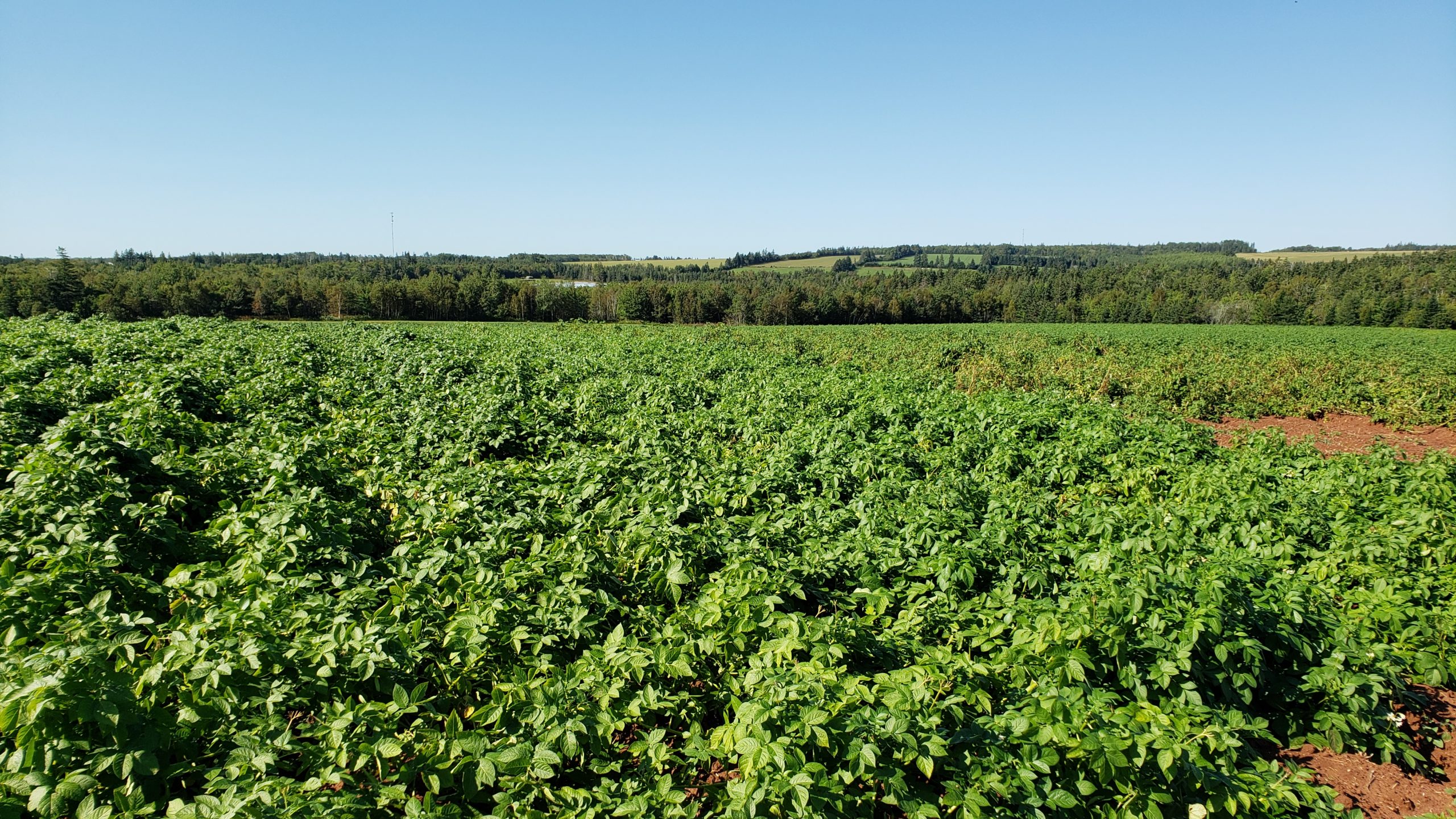
15 Sep Agronomy Update – Sept 15th
Hi everyone,
I looks as though most fields escaped the frost advisory last night without significant damage. It didn’t go below 7C at my place, but I hear it went to around 4C in a few places. The forecast for the next couple of weeks looks relatively warm…hopefully that will keep an early frost at bay (knock on wood!).
I think that we all can agree that some dry weather for the next couple of weeks would be ideal. The 14 day forecast I just consulted has some chances of showers in it, but not much in the way of significant rains…let’s hope that’s the case! A lot of fields are still saturated and need a good stretch of dry weather to prepare fields for harvest as well as lessen the risk of tuber diseases due to excessive moisture.
Avoiding Soil Compaction:
One thing to keep in mind at this time of year is staying off of fields in wet conditions in order to prevent soil compaction. Soil compaction can be introduced at any time of year with excessive weights of equipment and loads in fields, but it is made much worse when soils are wet. I know that everyone is looking at the calendar and worried about how they are going to fit all of the field work in…but you can create long-term issues that are hard to remedy if working/travelling on fields under wet conditions. A few thoughts on this:
- Only perform subsoiling/ripping under dry soil conditions. If done when the soil is wet, you won’t get the fracturing that you are looking for, and you can also introduce “smearing” from the shanks, possibly making the problem worse.
- Avoid mowing forage fields under wet conditions. At this time of year, growth has slowed down considerably for all lot of grasses, particularly sudangrass or pearl millet. Don’t be in a rush to mow if there is a risk of getting stuck or making too many tracks.
- We all know that when it comes to harvesting potatoes…sometimes, you have to harvest in wet conditions. It comes with the territory. In those cases, do what you can to control traffic in the field. Keep the trucks to the same paths where possible. There is much more potential for deep compaction from trucks with highway tires with heavy loads than from most of your harvest equipment. I have heard that 80% of compaction comes from the first trip across the field, so better to restrict those passes to the same area, where possible.
Crop/Disease Update:
I’m seeing a lot more fields that have been top-killed in recent days, as those varieties have reached their optimum size profile and now the key is getting skins set and ready for harvest. Overwhelmingly I’m hearing from growers that yields are good…the biggest worries are getting them harvested in good condition and avoiding low specific gravity scores. A few growers I talked to this week have reported that gravities from their first harvested fields is higher than expected…hopefully that’s a good sign!
Our final Spornado late blight spore tests all came back as negative again this week. This was our final week of testing for this season. The handful of sites that are still being tested on the Airspore program have also continued to be negative for late blight. Thank you to the growers that provided us with fields for the Spornado program this year. I hope that you found value in it. I will be reaching out later this fall to gauge response from growers as we make plans for next year.
I am hearing a few reports of higher levels of wireworm damage this year. I’m interested to hear from anyone that did any trials with Cimegra compared with either Capture or Thimet or versus a check strip. I personally saw some early season wireworm damage on corn this year. I think the adequate rainfall during most of the growing season kept the wireworms closer to the soil surface and more active than in the last couple of dry years.
As I noted in my update last week, growers will have to do the math on the balance between yield and quality in terms of when it’s necessary to top kill and harvest. Some newer varieties are not as tolerant of being dug green as Russet Burbanks, and some others don’t tolerate being dug in cold conditions. Thankfully, the stage of the crop this year should help make some of those decisions a bit easier than last year.
SpudChat – Wheat Pete Johnson
On this week’s episode of SpudChat, I talk with Peter “Wheat Pete” Johnson, a well-known agronomist, farmer and podcaster from Ontario. We talk about the agronomy of winter cereals like wheat, rye and barley and how they fit in a potato rotation. We also talk a bit about avoiding soil compaction this fall. You can listen at https://spudchat.buzzsprout.com/ or wherever you download your podcasts.
Have a great rest of the week. Morgan and I will be starting soil sampling the next couple of days, and hopefully we’ll be starting harvest samples quite soon. If you are hosting a trial with us and anticipate digging that field (or plowing) anytime soon, please give one of us a call so we can put you early on our work schedule.
Ryan
